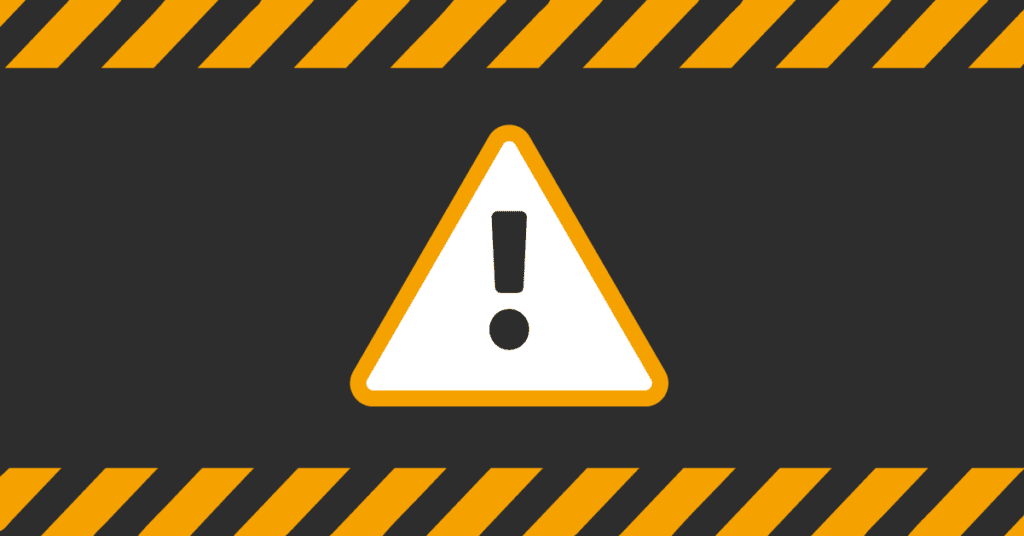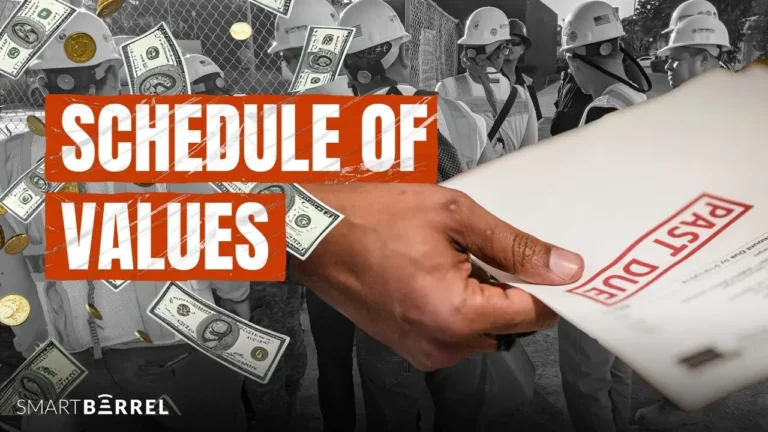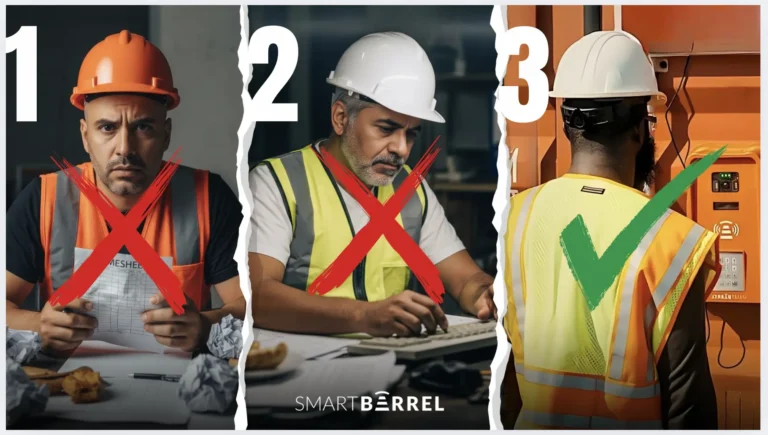The construction industry is changing rapidly. Safety is moving away from just being a required program to becoming an integrated part of company culture. But with a broad spectrum of employers ranging in size, age, and scope of work there’s not a one size fits all solution for creating a safety culture within a construction company. The impact of safety culture at a construction company reaches every aspect of how it conducts business from getting employees home safe, to their ability to make a profit, and everything in between.The companies and organizations in the construction industry that recognize the many benefits of creating a strong safety culture for their workforce are taking steps to improve and invest in this movement.
What does it mean to have a culture of safety in construction?
A culture of safety goes beyond hiring a safety specialist or having a safety program. When safety becomes an integrated part of all the decision-making processes of the employees, that’s when you know safety has become part of the company’s culture. In order for employees to use safety as part of their decision making process safety has to be a value of the company, a pillar that holds up the brand. Only then will it become an integral part of the business.
A bad safety culture is evident when safety is not part of all stages of construction, from planning to building. It’s easy to spot a company that doesn’t have a safety culture. For example, when safety personnel or third party insurance and safety managers walk the jobsite, what do your workers do? If work either stops completely or workers change the way they are working then there’s a problem. In that scenario, there is safety comprehension but it is not part of the culture. The employees in the field aren’t planning or executing tasks using their safety knowledge. But it doesn’t start in the field.
A good safety culture starts with the leadership and management at a company. They need to incorporate safety planning into their day to day responsibilities, especially when interacting with someone who reports to them and/or leads others in the organization. Communicating the importance of safety through words and actions will set a strong example for others to follow. The same standards must continue all the way down through the tiers of the company. Every employee should have a safety mindset, no matter their job.
Why is safety culture important in construction?
Above all else, the number one reason to have a safety culture is to make sure everyone gets home to their families at the end of the day. Construction by nature is a very dangerous industry. Accidents happen even when safety measures are in place, but there is always space for companies to step up and reduce the risk of injuries and fatalities by creating an exemplary safety culture.
Beyond protecting employees, having a strong safety culture will also improve your bottom line. It saves time and money for the company. Nonfatal falls make up over $2 billion in worker’s compensation annually. With fewer injuries and no jobsite fatalities, companies can keep their healthy workers productive and happy. In the long run it reduces costs like health insurance and other incurred costs, such as OSHA fines, which can range from $13,000 up to $136,000.
Having a safety culture also affects a company’s Experience Modification Rating (EMR) which can affect insurance rates, and be a pre-qualifier for entering bids for future jobs. A company’s EMR uses 3 to 5 years of past worker’s compensation and injury reports to indicate future risk. Companies can have a neutral rating of 1, a rating below 1 which indicates less risk and a potentially safer company, or a rating higher than 1 which shows a riskier company with a poor history of safety.
How can a construction company improve safety culture?
For companies looking to improve their EMR or overall construction safety culture, there isn’t one quick-and-easy solution that works for every organization. There are several key components a company can focus on to start building a stronger safety culture. But where do you start with something as big as safety? Take the daunting feeling out of it by concentrating these 5 areas first.
Here are 5 tips to improve your safety culture:
- Improve communication
Creating clear systems and channels of communication is the first way to improve the safety culture. Clear communication is essential when moving equipment or materials around a jobsite and it is equally important when notifying employees of timely hazards like incoming rain or lightning. To ensure that all employees are receiving the same information at the same time, standardization should be established. Utilizing a tool like SmartBarrel, the broadcast messaging capabilities will help create clear, efficient communication throughout an entire jobsite without wasting time tracking down the key players in the field.
- Enforce and and reiterate on safety training programs
Having a safety program that employees are trained with is a good first step, but that’s not going far enough. Without constant improvements and updates, the program will quickly fall behind the current standards, practices, and safety technologies. Furthermore, without enforcement, a safety program is ineffective anyway. Habits take time to form which is why it will take repetition and reiteration to transform a safety program into a safety culture.
Workers must comply and participate in a safety program in order to maintain a culturally high standard of safety within the company.
- Create Incentives
One way to create more buy-in for implementing safety programs into everyday work is by providing incentives. Some companies offer recognition and bonuses for the safest projects annually. People also respond positively to smaller incentives such as candy or $10 gift cards for stuff like gas, groceries and Home Depot.
The other side of the same coin would be to use swift and strict penalties when safety training is not followed. Some companies use the 1-strike rule, which means to show zero tolerance for certain safety violations.
- Implement jobsite access control
Securing a jobsite is a great way to improve safety culture. Access controls can be defined as security methods to limit who can enter certain spaces. Some methods for access control include turnstiles, biometrics, and security guards. Implementing a system for jobsite access controls offers many benefits and a variety of ways to make jobsite safer. Access control is important to keep people out of unsafe areas – this could be unqualified workers, civilians or even thieves and trespassers. Making sure that only qualified personnel can access areas with the highest hazards, and only correctly trained employees are taking part in certain construction activities. Another big reason is for attendance control to ensure that everyone who is on the job site has left the job site.
Technology like SmartBarrel can be an integral part of these systems. Communication and technology is at the core of creating a successful jobsite access control strategy. SmartBarrel can be used to track the number of people working on site, verify PPE requirements, and manage verified workers, which is vital information in an emergency situation.
- Requiring OSHA 10 and OSHA 30
Consider the fact that over 60% of construction accidents happen during an employee’s first year within the industry. One way to reduce the risk for newcomers to construction is to require safety training and certifications. Two safety programs that are a small financial investment and can be completed quickly are the OSHA 10 and OSHA 30 courses. There are many opportunities to take these courses online or in person. Costs vary from $60 to $180 per person but the investment is more than worth it for an organization to prevent an accident and all the associated costs that come with it. The Occupational Safety and Health Administration (OSHA) found that companies save $4-$6 on every $1 spent on safety. Organizations who prioritize safety training courses like this are empowering their workforce with safety knowledge they can continue to utilize throughout their careers.
Building a better safety culture takes a concentrated effort that utilizes constant communication with key leaders, engaging with the latest technologies and full participation in safety training programs. Every company has a culture, whether they intentionally created it or not, so it’s important to use any available resources to foster a culture that prioritizes safety for every project and for the benefit of all employees. Even small steps and investments can have a big impact.






